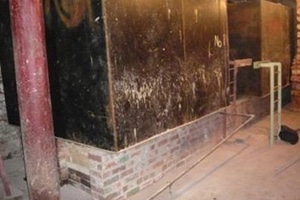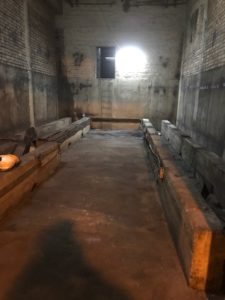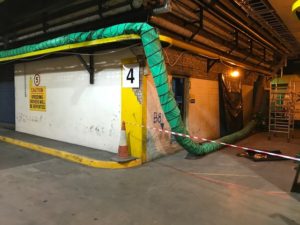Basement Oil Tank Removal Guide.
Many commercial premises such as offices, schools, hospitals and manufacturing sites have oil tanks situated in basement tank rooms, as this enables valuable space to be saved in other areas. This guide to basement oil tank removal will discuss a number of aspects that JWH Tanks have undertaken through the years to safely empty, clean and remove countless oil tanks from basements of both commercial and domestic properties.
Stage one – Oil tank survey.
When considering a basement oil tank removal, contacting an experienced and competent contactor is key, that is where JWH Tanks comes in. Upon receiving the enquiry, our advisor will begin to get a picture of your requirements, by immediately discussing the situation and offering advice on how best to proceed. It is often suggested that information or photographs are forwarded by email or WhatsApp to begin the process, and enable budget costs to be considered. Following the initial consultation, should any budget costs be attractive, a site survey can be arranged for one of our experienced engineers to gather all the required details to confirm costs and submit to our safety team for the product of a safe system of work.

Stage two – Documentation.
A basement oil tank removal can be a hazardous job and must be conducted in line with a safe system of work. JWH Tanks directly employ safety specialists to ensure that all of our processes are safe, compliant with best practice and current regulations and work for everybody involved. A method statement, accompanied by relevant risk and COSHH assessments will be sent for approval prior to our team attending site.
Upon arrival, our lead engineer will brief the team on the scope for the basement oil tank removal, then extend that safe system of work by opening the relevant sequence of permits by which to control the works. Copies of all documentation for each day are then forwarded to the client, included permits and waste notes.
Stage three – Tank emptying & cleaning.
It is key to ensure that any fuel oil is removed from site so that risks are further mitigated prior to the oil tank being removed. JWH Tanks employs an in-house tank cleaning team, alongside the operation of a hazardous waste transfer station, thus allowing for all tank emptying and cleaning processes to be handled internally. This again helps us to maintain strict control over the operation, ensuring that our clients receive our full attention. Hazadous waste consignment notes are issued for all tank cleaning waste removed from site, all of which are subject to environment agency audit trail from our waste transfer station. Information can be found from the Environment Agency on how businesses should deal with hazardous waste.
More information can be found in the following link regarding our commercial oil tank cleaning services.

Stage four – Oil tank removal
With all fuel oil removed from site and the tank cleaned internally, the process can begin to remove the oil tank shell. This can be carried out in a number of ways, largely depending on the size of the tank and the fabric of the building. This information will have been established from the initial consultation, through the survey stage and when designing the safe system of work. JWH Tanks have the equipment and experience to safely hot or cold cut tanks from a multitude of locations, paying consideration to issues such as ventilation, manual handling, fire protection and access restrictions.


Stage five – Completion.
With the oil tank removal now complete, the site will be left clean and tidy, then handed back to the client along with all required documenttion, such as a certificate of decommisioning, any remainig permit copies, waste notes and bespoke templates as required. We pride ourselves on ensuring a thorough service from inception to completion, as with all of our services, please feel free to browse other case studies, call our head office on 01132635163 or email [email protected] to get in touch.
